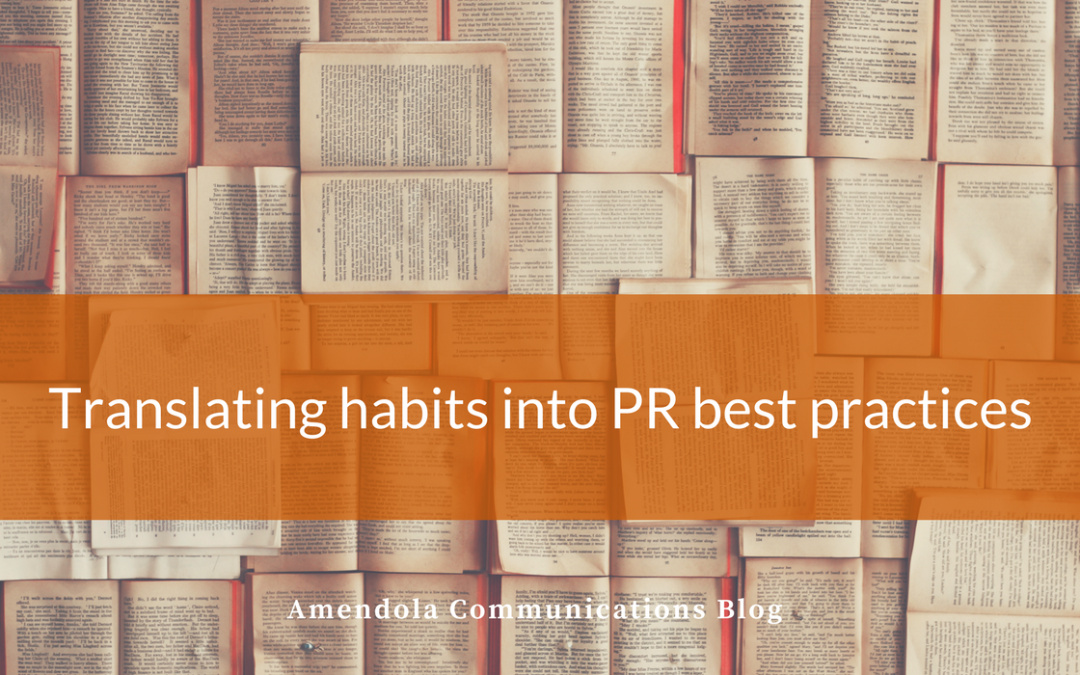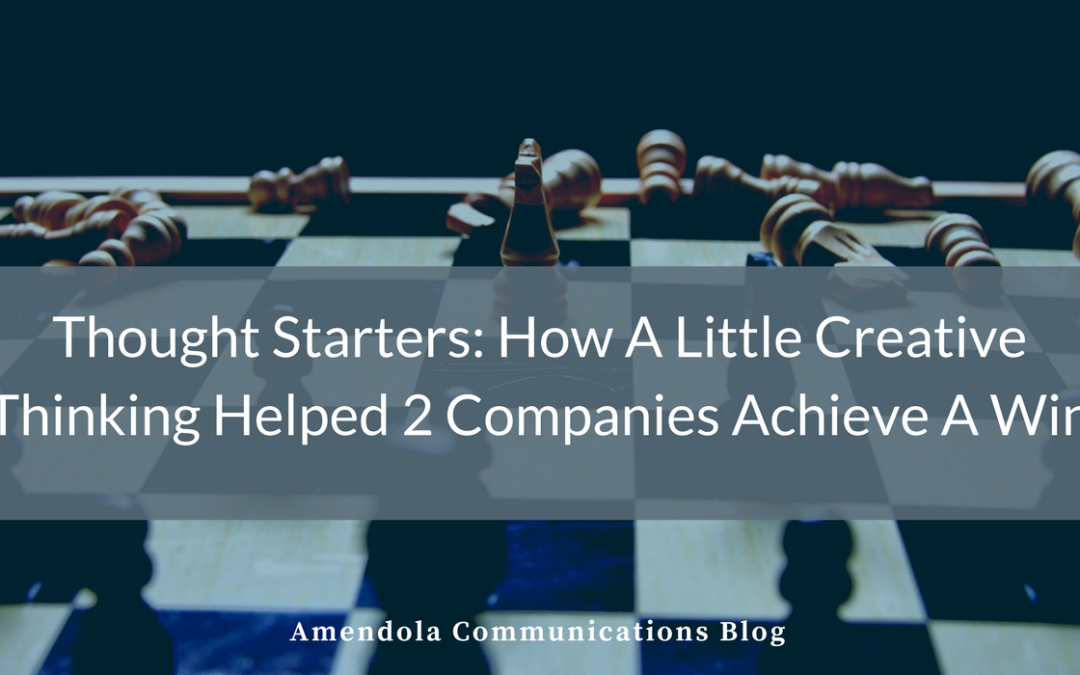
by Philip Anast | Apr 25, 2018 | Blog
In his book, “The Power of Habit: Why We Do What We Do in Life and Business,” New York Times business reporter Charles Duhigg explores the neurology of habits, why habits form in human beings, and how we can change them through a systematic approach of identifying their cues, rewards and routines.
Establishing new habits can become automatic, so that we don’t even think about them.
Duhigg employs multiple case studies to convey how habits are teachable to individuals, organizations and businesses, and societies, illustrating their profound impact. In one example, he takes us through the NFL coaching career of Tony Dungy and how he instilled certain habits in his players to help them react to cues in game situations without having to overthink their actions. The ultimate result was a Super Bowl championship in Indianapolis.
Another one centers on Paul O Neill, former treasury secretary in the second Bush administration and earlier, the President of Alcoa. O Neill’s emphasis on safety in his plants, much to the initial chagrin of fellow executives and board members, helped quadruple Alcoa revenues while instilling worker habits that empowered them to offer ideas for other improvements and best practices. The results were a happier workforce, and crucial business alignment between rank-and-file workers and management.
Such demonstrated success informs my thinking around best practices. While we have talented staff members who bring their own unique experiences and skillsets to Amendola Communications, it is important that we coalesce around certain “habits,” or best practices, to ensure consistent client service, delivery and results.
Best practices around account management/client service, content development, social and media relations help our agency be prodigious client stewards with the goals of fulfilling our PR program work and building long-term client relationships. Equally important is a workforce that understands its role, feels empowered to do its best, and delivers great results. In future blog posts, I’ll explore best practices around client planning and client communication.
by Matt Schlossberg | Mar 21, 2018 | Blog
Before social media, cross-platform campaigns and general business trends toward greater economy and efficiency of services, public relations and marketing though often collaborators were two distinct disciplines. Despite a kind of “kissing cousins” relationship, each had its own mission and purpose.
In today’s world, however, public relations and marketing are connected in ways that are both complex and granular. How effectively these well-blended professions work together is key to positively and creatively positioning your business for success.
Two Faces or a Vase?
It used to be that marketing handled advertising and PR handled earned media. Both jobs required that they make the business look good. That’s still true today kind of. It depends on how you look at it, and even then it can be hard to explain.
Let’s start with a visual the Rubin’s vase. This is a rather famous optical illusion that is usually depicted as a simple black-and-white image that can be interpreted differently depending on who is looking at it. One person looking at the image may see the shape of a vase, while another might glimpse two faces in profile facing each other. The person who sees the face can eventually see the vase, and the person who sees the face can see the two profiles, but neither person can they maintain both images concurrently.

This is what PR and marketing used to look like. Marketing helped move the company’s product (two faces), while PR sold the “vase” in the form of the company’s brand and reputation.
Today, those distinctions are not as stark. Businesses are expecting their PR and marketing teams to find a way to see two faces and a vase at the same time. Like never before, PR and marketing need each other to help a business succeed.
A Distinction without a Difference?
OK, so the average business executive may not really care about whether PR and marketing represent a single entity or distinct areas (after all, they care about results, which as we know, always fall freely from the magical Results Tree). It’s OK we’re used to it.
But you should care. More than anyone else in the company, the PR and marketing teams orbit in close and consistent proximity to your customers. Understanding how they best work together can make or break a business. If they are not on the same page, your company will not be on the same page with the customer.
You do the math.
The Content Example
One of the reasons why PR and marketing are “colliding” is that in today’s environment content is king. Byline articles, blog posts, tweets, status updates, e-mail blasts. It seems that every new piece of content is “old” by the time the final stamp of approval is given.
Campaigns highly customized to the business or even a specific initiative within the enterprise maximize your business’s core messages. But they also act in a way to bring a measure of control, discipline and meaning to the tsunami of content most businesses need to produce to stay relevant in hyper-competitive industries.
The success of these campaigns often hinges on how well marketing and PR work together.
With any initiative, the Golden Rule is “early and often.” This means that your PR and marketing pros need to engage early and often in order for the client to enjoy the end result (capitalizing on the success of a campaign or initiative).
PR and marketing teams feed on data both internal (from sales, product developers, c-suite executives) and external (customers and market shifts within the industry). That data will ultimately define the functional aspects of a campaign (the best vehicles and channels to reach prospective customers) and the emotional resonance (how the precise positioning of a message impacts a customer and their willingness to buy from and stay loyal to the business).
Final Thoughts
When I start with a new client, one of my first goals is to get to know the marketing team and what they are working on. I also ask to engage with the sales team. What are customers connecting with? How do they interact with the company? And I don’t accept stock answers. I drill down. Sometimes, a turn of phrase or just the right word can be the different between a lost sale and a signature on the dotted line.
Years ago, I might not have thought to do this. Today, I understand that the data I acquire from them will inform the shape of my PR campaign. I also understand that my PR campaign will affect everything on their side from sales presentations and the keywords and phrases used in a brochure to social media campaigns and the priorities on the content calendar.
Marketing and PR, while still very much distinct, are travelling toward the same goal and often taking the exact same road. There are the occasional places where the two diverge, but understanding those subtle differences is where true collaboration and the success of your business lies.

by Ken Krause | Jan 10, 2018 | Blog
One of the core tenets of journalism (and public relations, which at most colleges is part of the School of Journalism) is the use of AP style when writing. AP, of course, stands for the Associated Press, whose manual and rules are drilled into journalism students from the day they begin writing for their school newspaper (or whatever aspiring writers write for in school these days).
For a PR professional, use of AP style demonstrates that you are a journalism insider. That’s very important when you’re pitching a byline article, or a press release, or some other piece of content that needs to be reviewed and approved by an editor. It gives you a certain level of credibility, or at least signals to an editor that he or she won’t have to spend untold hours bringing your writing up to par.
Failure to use it, on the other hand, is generally seen as an admission that you are an ignorant hack whose writing skills would be best applied to warning labels on pet supplies. No one wants that.
This, of course, is the reason Amendola Communications is very careful about conforming to AP style. It benefits not only our agency but our clients.
Still, for those who aren’t familiar with AP style, some of its peccadillos can be a bit off-putting. They’re not used to seeing things written that way, and their preference for the approach they’re used to can become a bone of contention that slows down the writing and approval process.
Here’s the reality of the situation. When you are writing for your own blog, or marketing materials, or internal memos, etc. go ahead and let your preferences dictate the style. But when you’re writing something you’d like to have published by an independent media outlet, it’s important to follow AP style.
So what does that mean from a practical standpoint? Glad you asked! Here are five examples of the differences between regular people style and AP style. Those of you who are familiar with it please feel free to add additional common uses in the comments section.
Capitalizing corporate titles or not
This is the one that probably causes more consternation between Amendola Communications account managers and clients, so let’s start there.
Most people are taught in business writing courses to capitalize someone’s title, such as President, or Chief Medical Officer, or Vice President of Some Made Up Area that Sounds Good on LinkedIn. It’s viewed as disrespectful not to capitalize the title.
That is not the case in AP style. Titles are never capitalized, unless they are used as part of the person’s identity. Which means you can refer to President Trump with capital letters, but you would write Donald J. Trump is president of the United States.
This, by the way, is one of the easiest tests for editors and journalists to see who knows what they’re doing. Get it right in your press release and you’ve removed a barrier to publishing.
Spelling out acronyms
While the healthcare industry loves it some acronyms, AP style is not as much of a fan. So while you may believe everyone you’re communicating with knows EHR stands for electronic health record, AP style still demands that you spell it out anyway.
Usually, you will spell it out first, then put the acronym in parenthesis afterward, i.e., electronic health record (EHR). The exception is in quotes, which means if you’re going to use an acronym in a quote try to spell it out ahead of time, just to be safe. Of course, some acronyms that are widely known, such as FBI or CIA, do not need to be spelled out. But if you’re writing about them and you work in health IT, you probably have bigger issues than AP style facing you.
Bonus fun fact #1: According to the AP Style guide, using the initialism CEO by itself is acceptable, although they still recommend spelling it out somewhere else. Other titles, such as CFO or CMO, must always be spelled out because they are less universal.
Writing out numbers
This is another of those interesting AP style oddities. When writing out single numbers from 0-9, AP style dictates you spell out the number rather than use the numeral. So zero for 0, one for 1, all the way up to nine (9). Once you’re in double digits, you use the numerals, so 10, 11, and so forth.
That also applies to numbers used in combination, which can get very awkward. You would write “there are 10 three-bedroom homes on this block” or “Put the three of us down for 12 medical devices each.”
State abbreviations
The AP has its own set of state abbreviations that are preferred, especially for use in a dateline. They are different (and longer) in most cases from the more-familiar postal codes, so it’s worth looking up. Or, you can just follow this link, although they’re not laid out quite as nicely as you might like.
Here are a couple of examples. The postal code for California is CA, but the AP style abbreviation is Calif. The postal code for Arizona, where Amendola Communications is headquartered, is AZ whereas the AP style abbreviation is Ariz.
Two-word states tend to get different treatment. While New Hampshire uses an N and an H for both, the postal code is NH while the AP style abbreviation is N.H. The extra periods make a difference.
Bonus fun fact #2: When you’re in the body of a press release, AP style stresses spelling out the name of the state rather than using abbreviations of any kind.
Bonus fun fact #3: Certain large cities, such as Chicago, Los Angeles, Phoenix, and New York, don’t require a state at all in the dateline. In fact, including a state again makes you look like you don’t know what you’re doing.
Other types of abbreviations
For pretty much any other type of abbreviation, you’re always going to use periods after each letter. That includes professional credentials (M.D. instead of MD, Ph.D. instead of PhD) and time designations (p.m. instead of pm, E.S.T. instead of Eastern Standard Time).
Yes, it can be very odd-looking, especially when you say an event will begin at 1:00 p.m. E.S.T., and yes, all those periods kind of get in the way. But that’s the way, uh-huh uh-huh, they like it. (Sorry, channeling my inner Kate Donlon there.)
So many rules
This is just a small sampling of some of the most common issues that seem to crop up from time to time. There are many more. In fact, the AP puts out an entire manual with everything you could possibly wonder about, which they will be more than happy to sell you if you’re interested. It’s available in both paper and electronic form.
Or, you can just count on your friendly neighborhood PR pros to get it right for you. It’s all part of the service.

by Todd Stein | Dec 13, 2017 | Blog
Introducing Hackonomics,” the campaign hinged on a report conducted by RAND (sponsored by Juniper) about the hidden economy of the hacker universe. Juniper wanted to take a fresh look at hackers to reveal the motivations and operations of the hacking community. The result was a first-of-its kind economic analysis of the cyber black market and the impact it had on targeted businesses.
Juniper built an integrated campaign that leveraged PR, marketing, government relations, sales and digital and social media. Tactics included webinars, a new website dedicated to the campaign, online ads and social media initiatives. Juniper briefed policymakers, made the report freely available in 10 languages, and distributed it across RAND’s customer base.
Here are two of the most creative elements of the campaign:
- Juniper illustrated the complexity of the hacker market by drawing the comparison to a thriving metropolis, highlighting its interconnectedness. An interactive presentation enabled viewers to see the hierarchical job functions, businesses, schools and even law enforcement roles held by active members of the cyber black market.
- An interactive timeline highlighting notable milestones and hacks over the years was shared with the cybersecurity community ahead of the report’s release to encourage conversation. Brilliantly, Juniper intentionally left key milestones off the timeline, which encouraged community members to contribute their own milestones and share the history of security hacks more broadly among their contacts.
According to Juniper, the campaign nearly doubled its share of voice over a three-month period thanks to 17,000 blog views, 1,250 executive summary downloads, and over 300 global articles, including feature placements in newswires, as well as the Financial Times, Bloomberg, The Wall Street Journal and The Daily Telegraph (UK).
Hijacking the Super Bowl
The second cool PR campaign is one of the most creative and effective uses of a limited budget that I’ve seen. In 2015, Volvo was preparing to launch a new, updated version of its XC car amid slumping sales and stiff competition from larger, more popular brands like Mercedes Benz, BMW and Lexus.
Looking for ways to tap into an affluent, millennial audience, Volvo hit on the upcoming Super Bowl, whose audience fit the mold. But the carmaker’s budget for the product launch was enough for only about one-third of one second of Super Bowl airtime.
Their solution is a textbook example of hijacking the “Volvo Interception” campaign.
While their competitors lined up to buy multi-million dollar ads for the big game, Volvo began using its social channels, other ad buys, and traditional media relations to spread the word about its campaign.
The idea was simple: Every time a competitor’s ad was broadcast during the Super Bowl, viewers using the hashtag #VolvoContest on Twitter could nominate someone to win a one of 5 new Volvo XC60s.
It worked brilliantly. The Interception campaign drove 70 percent year-over-year sales increase for the XC60. That was the highest February boost in the car’s history. The hashtag was tweeted over 55,000 times, more than any other auto-related hashtag.
The Interception campaign achieved great results by capitalizing on other brands, effectively stealing their attention and breaking through the noisiest media day of the year.
Creativity Trumps Relationships
You’ve heard it before: PR is all about relationships. It’s a tired phrase but still true. Success hinges on having a solid working relationship with key journalists, analysts and influencers.
But even more important than relationships is the ability to craft a creative pitch or campaign from a hodgepodge of information about your client their market position and history, competitive differentiators, target audience, audience influencers, budget, and a million other factors.
As the Juniper and Volvo examples show, creativity trumps relationships, and in many cases can even overcome extremely limited budgets.
The examples also illustrate the power of integrated campaigns. Combining social media, traditional media relations, marketing and advertising can exponentially magnify the impact of a good idea.
What great ideas in marketing or PR have you seen?
by Administrator | Nov 28, 2017 | News
Company behind nation’s most widely used care management system for pop health taps HIT PR agency to promote its solutions for value-based and integrated care
SCOTTSDALE, AZ Nov. 28, 2017–Amendola Communications, an award-winning healthcare marketing and public relations agency, is thrilled to add population health technology pioneer HealthBI to its customer family. Amendola will be a key player in HealthBI’s plans for rapid growth in 2018, promoting solutions that are already the most widely deployed of their kind while expanding awareness of the company as a visionary thought leader in value-based and integrated care.
These thought leadership messages will be of particular importance in 2018 as more payers engage providers in risk-based contracts. Under such reimbursement models, payers and providers must enter into a newly collaborative relationship and share tools that give insight into the patient’s real time picture of health. HealthBI is not only a knowledgeable vendor of the technology solutions needed, it has a keen understanding of how to enable provider adoption indeed, embrace of healthcare that focuses on quality and better outcomes.
“Jodi Amendola and her team at Amendola Communications clearly get the HealthBI value proposition. With their deep and broad understanding of the healthcare landscape, we are confident that we have selected the ideal partner to promote our mission far and wide,” said Scott McFarland, President, HealthBI.
Amendola will help build HealthBI’s thought leadership profile through a mix of targeted media relations, byline article placements, and strategic speaking opportunities. Additionally, the agency is helping HealthBI produce a knowledge library that will feature case studies and guides on a range of topics from using technology to reduce unnecessary high utilization of ED and acute care, to successfully integrating behavioral healthcare and primary care, to spurring provider adoption of quality and performance monitoring.
“Very soon after our introduction to HealthBI, we realized this company is poised to help the healthcare industry fully embrace value-based care and integrated care. Given the tremendously positive impact these models of care are set to make, it is incredibly exciting to help HealthBI advance its mission,” said Jodi Amendola, CEO, Amendola Communications.
Breaking down the barriers to better models of care
Value-based care holds the key to gaining control of our ballooning national health bill, yet the transition has been difficult for providers and payers to make. In a parallel development, the movement to integrate medical and mental healthcare may finally help improve outcomes for a long-underserved population, yet this shift, too, has been challenging to navigate.
HealthBI’s technology solutions and health data expertise are aimed at making the transitions to these new models of care successful and cost-effective. The company’s flagship care management and care coordination platform brings all care teams together to improve outcomes for even the highest risk patients, while helping both payers and providers meet quality measures.
About HealthBI
Headquartered in Scottsdale, Arizona, HealthBI was created by a team of industry leaders and physicians to fill the need for tools that enable health care payers and providers to reduce admissions and readmissions, automate care transition and improved value-based care performance and HEDIS outcomes. Today, the company’s care management and care coordination platform for population health management is the most widely deployed in the nation used in over 60,000 clinical sites across 50 states. HealthBI customers have reported results that span from a 25 percent decrease in 30 day re-admits to a nearly 300 percent improvement in closing gaps in patient care. To learn more about HealthBI, visit healthbi.com and follow HealthBI on Twitter and LinkedIn.
Jodi Amendola | jamendola@acmarketingpr.com | 602-614-3182



